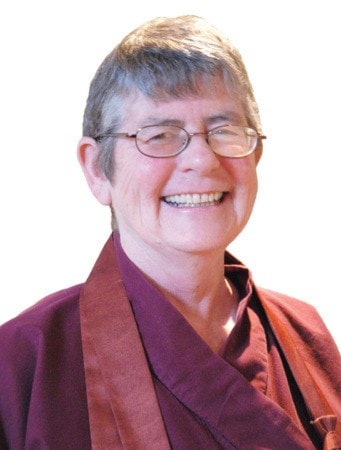Living the Zen Life is about a lot more than daily meditation and mindful living, although these things are important to a Zen practitioner. In addition to these activities, Zen students learn and make their best effort to live by a code of ethics that is summarized in 16 precepts that define the essence of ethical behavior. Practicing these precepts at the Creston Zen Centre is an integral part of our Zen training and gives us an opportunity to consider how we can bring these precepts into our community, our work and our family lives. The 16 precepts help create a supportive, conflict-free and safe environment for everyone. Every second year at the Creston zendo, I offer a special class in which we study these precepts. Since this is the year for that class offering, my next series of articles will be a study of the 16 precepts of Soto Zen Buddhism.
The 16 Buddhist precepts are such an intimate a part of Zen practice that they have traditionally been called the “blood vein” of the lineage of teachers that began in the fourth century BC and extends through two and a half millenniums to the present day. These precepts can be understood and interpreted at many levels. They can be understood as supports for the practice of awakening from the conditioning that controls our actions and responses, they can be seen as an arena of bringing the practice of compassion into daily life or they can be understood as the natural outcomes of awakening itself. However they are understood, they are the blood and bones of all Zen practice and no true practice can exist without them.
The precepts were developed in response to incidents that occurred in the early Buddhist communities that resulted in disharmony, dissention and suffering. Whenever a squabble broke out among the monks who travelled with the historical Buddha, the community would meet and create an ethical guideline that would prevent the conflict from arising again. For this reason they are very practical and if followed, result in a harmonious community. While some are similar to the Ten Commandments, they were not dictated from above or carved in stone by an external deity. Instead, they emerged from the deliberations of a community that was learning to live harmoniously.
The 16 precepts are as follows: 1) take refuge in Buddha, 2) take refuge in dharma, 3) take refuge in sangha, 4) cease from harm, 5) do only good, 6) do good for others, 7) refrain from taking life, 8) take only what is given, 9) do not misuse sexuality, 10) practice truthful communication, 11) refrain from intoxication, 12) refrain from lying, 13) do not praise self at the expense of others, 14) refrain from possessiveness, 15) do not harbour ill will, and 16) cultivate and encourage awakening.
This next series of articles will go into detail on each one of these precepts.
Suggested practice: During the next two weeks, examine the code of ethics that guides your life. What are your core values? How do they express themselves in your daily life?
Kuya Minogue is resident teacher at the Creston Zen Centre and will be offering classes on the 16 precepts of Soto Zen Buddhism at 7 p.m. on Thursday evenings from Feb. 27-April 17. For more information, visit www.zenwords.net or call her at 250-428-6500.
